Citing & Being Cited:
Code & Data Edition
Vicky Steeves & Nick Wolf | DATE

Vicky's ORCID: 0000-0003-4298-168X | Nick's ORCID: 0000-0001-5512-6151
This work is licensed under a Creative Commons Attribution-NonCommercial 4.0 International License.
Agenda!
- Data Citations: Yours & Others
- Code Citations: Yours & Others
- Managing Citations (AKA keeping your sanity)
The Why of
Data & Code Citation
Data and code should be cited within our work for the same reasons journal articles are cited:
to give credit where credit is due (original author/producer) and to help other researchers find the material.
Citing Data
A data citation includes the typical components of other citations:
- Author or creator: the entity/entities responsible for creating the data
- Date of publication: the date the data was published or otherwise released to the public
- Title: the title of the dataset or a brief description of it if missing a title
- Publisher: entity responsible for hosting the data
- URL or preferably, a DOI
Citing Data
Some optional (but recommended) values include:
- Edition or version
- Date accessed online
Styling Citations
Chicago
Authors. Title. Place written: Organization, Date of publication. Distributor. Link.
MLA
Authors. Title, version. Place Written: Organization, Date of publication. Access method, date accessed. Link.
APA
Authors (first & middle name abbreviated). (Year). Title (Version number) [Description of form]. Location: Name of producer. Link.
But but....I want to make MY data citable!
Step 1: Clean & Prep Your Data!
Step 1a: Put your data into an open format!
- Be software agnotic!

Step 1b: Package Your Materials
- Data files
- Documentation & description
- Analysis tools if possible
Step 2: Publish/Make Available
When you publish, you should make the underlying data available in a repository that issues DOIs! You then link that DOI out!
This means that anyone who wants to use your data must go to this repository, download it, and cite their use if they publish using it!
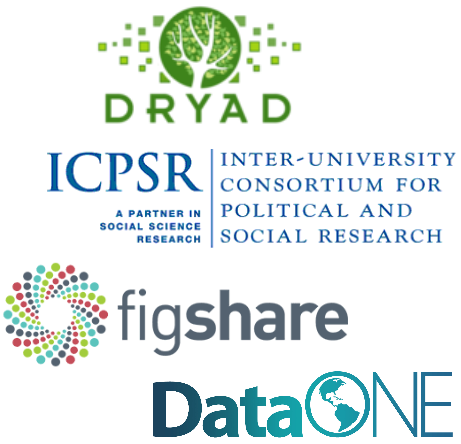
Step 2: Publish/Make Available
You can also publish your data in a data journal! These are domain-specific or journal-specific peer reviewed journals just for data!
These also give you a DOI that you can share.
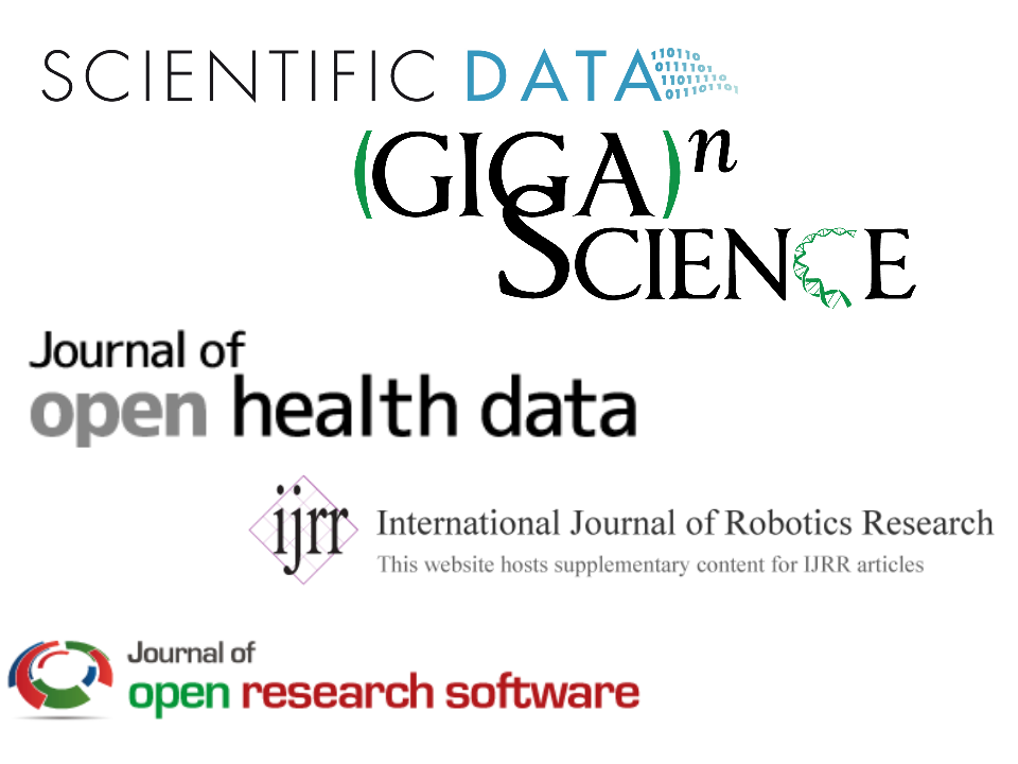
Getting Data Cited
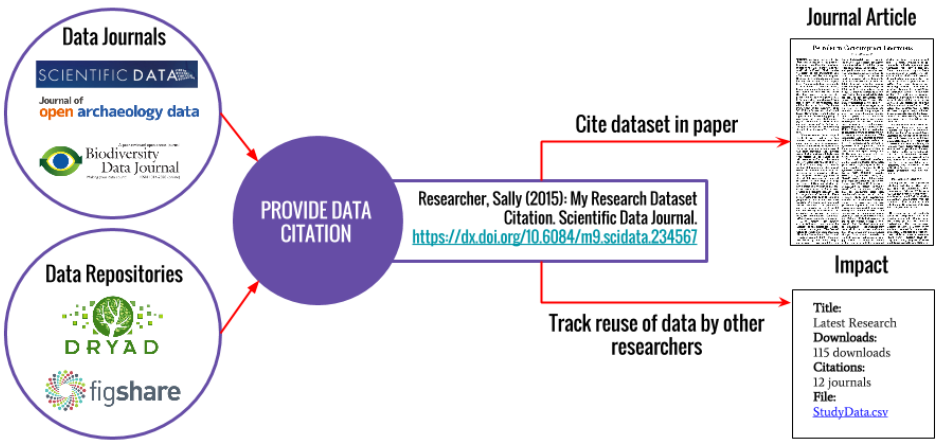
Advantages to Tracking Citations:
- Demonstrate to funders/promotion committees you & your data make big impacts in your field!
- they judge merit based on intellectual merit and wider impact
- tangible evidence to weigh against the cost of research
- Monitor usage of datasets!
- You can know what forms of data prep and data publication are most effective for sharing/open science!
- Uncover opportunities for collaboration amongst peers
Examples
Exploring Dryad
Exploring Open Science Framework
Citing Code
Just like data, sharing and archiving of software is best done in repositories and journals!
But what software should you cite?
To start, you would only cite code that's not universal. Don't cite Microsoft Office, but DO cite scikit-learn!
Code Anomalies:
Authors vs. Contributors
A piece of software might be created by dozens, if not thousands of contributors. Do all of them get cited? No!
It's the difference between the maintainer(s) of a project (who is/are currently responsible for it), and the contributors (those who have committed code to the project, or made other contributions). You would cite the maintainers, and possibly also previous maintainers.
Code Anomalies:
Location?? Publisher??
Publisher name/location is similarly difficult. This could be optional, but not when software is produced solely by a specific university or software company.
The geographic location is probably irrelevant, unless it's necessary for distinguishing between multiple entities with the same name.
Styling Citations
Chicago
Software Name. Location: Publisher/Author, Date. Link if available.
MLA
Authors, Software Name, Place Written: Organization, Date Written. Link if available.
APA
Author Name (first & middle name abbreviated). Title of Software/Code. [Computer software]. Location: Publisher. Link if available.
But but....I want to make MY code citable!
Step 1: Clean & Prep Your Code!
Step 1a: Comment & style your code—
- COMMENT YOUR STUFF. PLEASE.
- Use the Pep 8 Python style guide!
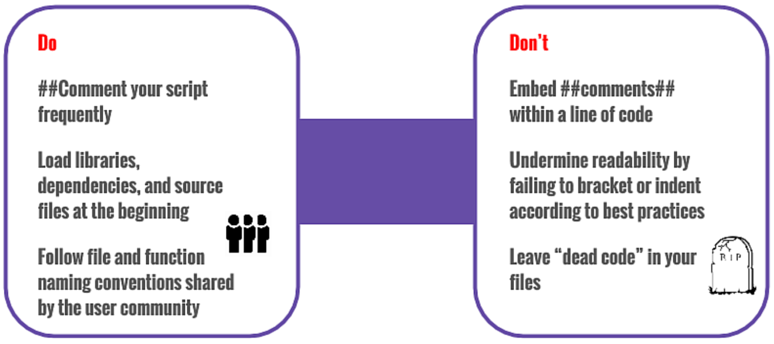
Step 2: Publish/Make Available
The two most popular repositories are NanoHub (about 2,000 DOIs for software) and Zenodo (close to 5000 DOIs for software).
NanoHub uses the open source HubZero software that integrates a subversion code repo. Zenodo was integrated with Github to give a DOI to a new release of a git repo.
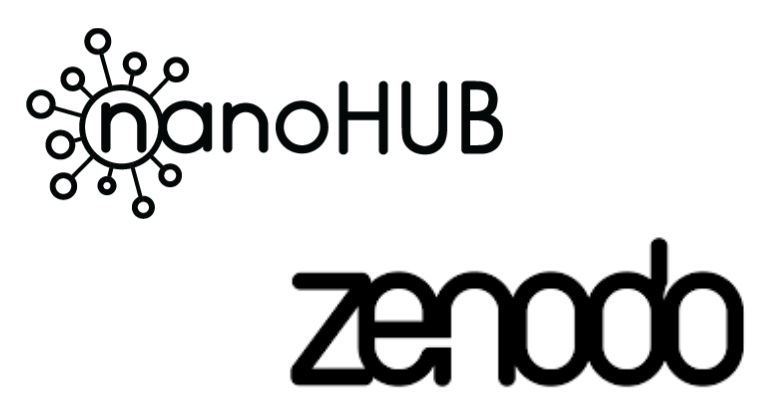
GitHub + Zenodo
- Log into Zenodo using your GitHub account.
- Zenodo will redirect you back to GitHub because permissions. Grant them.
- Pick the public repository you want to publish.
- Check to make sure there is now a Zenodo webhook in the repo you chose.
- Release a version!
- Add a brief description in Zenodo, and that version gets a DOI and a badge!
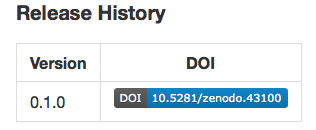
Step 2: Publish/Make Available
You can actually submit your software to journals for peer review! So cool and futuristic~
- The Journal of Open Research Software: They require a manuscript and a link to any repositories.
- The Journal Open Source Software: They require a brief report on your software, and a link to a GitHub repo. That simple!

Examples
Exploring Zenodo
Exploring the Journal of Open Source Software
But how do I keep track of all these citations??
Citation Management Software!
Citation Management Tools enable you to:
- Import citations from databases, websites, catalogs
- Organize citations using folders and tags
- Attach PDFs, images, etc. to your citations
- Annotate your citations and/or PDFs
- Output auto-formatted bibliographies and in-text citations (APA, MLA, & hundreds more styles)
Using Zotero for Citation Management

Zotero
- Zotero is what's called a bibliographic management tool.
- Items in a Zotero library can be annotated with tags and text notes for YOUR convenience!
- Zotero will also store links to files, either as a standalone library entry, or as a child element linked to a bibliographic record.
Note: NYU Libraries provides support for learning Zotero. See the Zotero LibGuide for more information.
Why Zotero over others?
- Free and open source! See the GitHub repo~
- Save citations !IN BROWSER! using their FireFox and Chrome extensions.
- The Zotero toolbar is easy to use and works in both Microsoft Word and OpenOffice, letting you insert citations into your paper quickly.
- Lots of flexibility in the types of materials you can cite!
Manually Adding Citation to Zotero
Zotero captures citation information about a variety of materials -- notice that "computer program" is one of them! And "data" is coming soon.
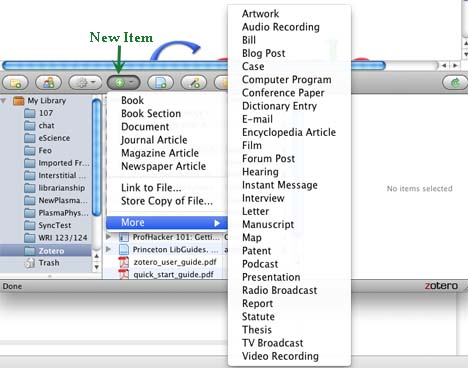
Adding Citations Via Browser
Demo time!
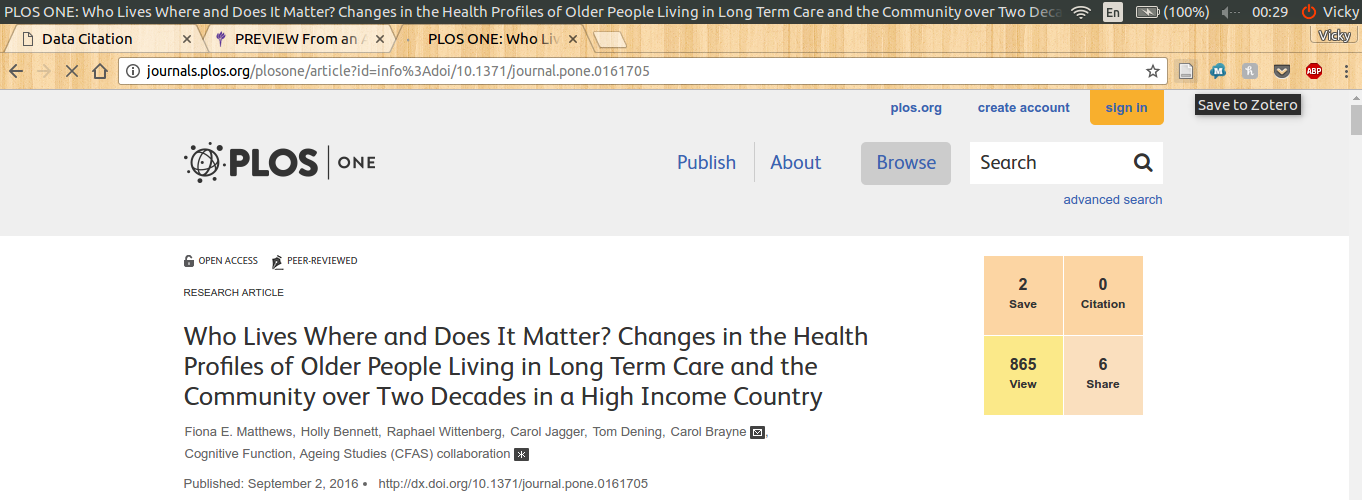
Group Citation Libraries!
You can collaborate with as many people as you want! One person in your group should then create a group library and INVITE the other group members to join the library. Use their email addresses that they used to sign up to Zotero.
Save your references into the group library. When you sync to the Zotero server, the reference you added will be uploaded to the Zotero server. Then when the other group members sync, that reference will show up in the group library folder in their Zotero library.
Export a Bibliography
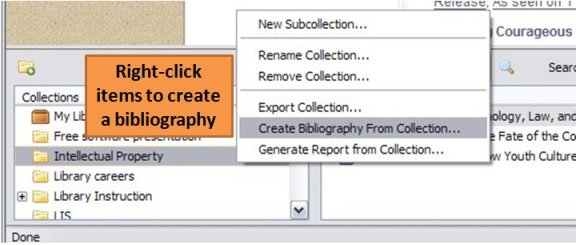
Upcoming Classes
Data Cleaning & Management with Python | October 11th,
5-6:30pm | Bobst Library
Intro to Git and GitHub | October 18th, 4-6pm | Bobst Library
Thank you! Questions?
Email us: vicky.steeves@nyu.edu & nicholas.wolf@nyu.edu
Learn more about RDM: guides.nyu.edu/data_management
Get this presentation: guides.nyu.edu/data_management/resources
Make an appointment: guides.nyu.edu/appointment
Vicky's ORCID: 0000-0003-4298-168X | Nick's ORCID: 0000-0001-5512-6151
This work is licensed under a Creative Commons Attribution-NonCommercial 4.0 International License.